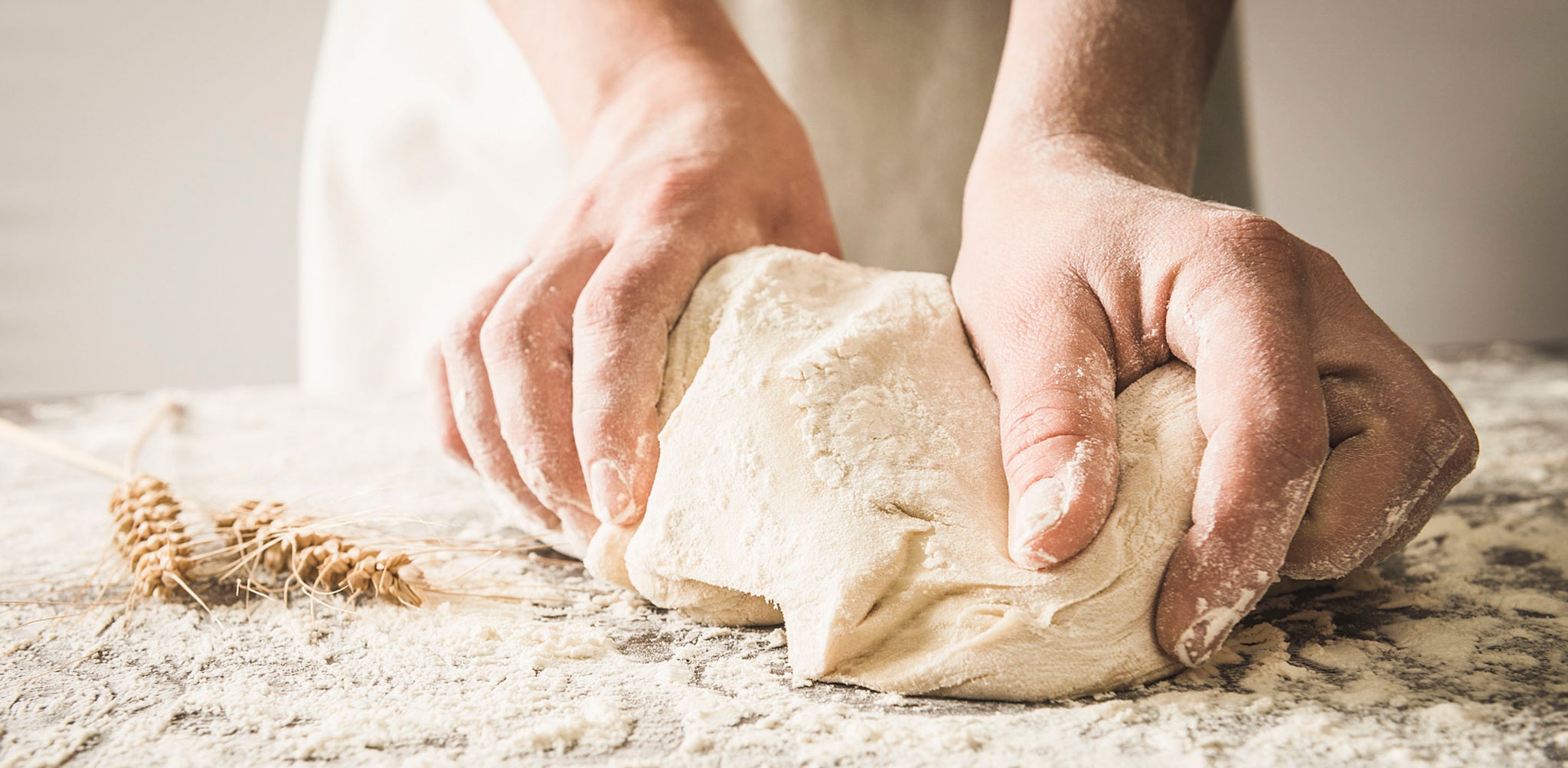Baking Lesson 102: Knowledge of Different Types of Flour

6. Bread Flour
With its high protein content, bread flour is the sturdiest type of flour, making it an ideal choice for providing structural support to baked goods. If you substitute all-purpose flour with bread flour in bread recipes, you'll get a more structured loaf with reduced "mushroom" effect on the top half. You'll enjoy a bread with more volume, a chewier texture, and a well-browned crust when baked.
- Protein Content: 12-14%
- Best For: Breads and Pretzels.
7. Whole Wheat Flour
Whole wheat flour has a unique characteristic of being more absorbent than all-purpose flour, which means it requires more liquid to work effectively. This results in producing doughs that are stickier and baked goods that are denser in texture. You can compare the density of a slice of whole grain wheat bread to a piece of white bread to get a better idea of this difference.
Starting with substituting 25% of all-purpose flour in a recipe for whole wheat flour is a good approach for beginners since whole wheat flour can be challenging to work with. As you gain more experience, you can gradually increase the percentage. When working with whole wheat flour, be careful not to overwork your dough, as it can affect the final product.
In addition, it's important to note that whole wheat flour has a shorter shelf life compared to all-purpose flour. After being stored in a cool and dark place for three months, it should be discarded.
- Protein Content: 13-14%
- Best For: Bread Loaves, Muffins, Pita Bread.
8. Semolina Flour
Semolina flour, although resembling cornmeal at first glance, is actually derived from wheat and boasts a high protein content. As a result, it produces a dense and chewy dough with a buttery color and rich flavor, making it a popular choice for creating pastas.
- Protein Content: 13%+
- Best For: Pastas and Hearty Bread.
GLUTEN-FREE FLOURS
Have you ever wondered why gluten-free bread products always come out smaller and thinner? This is because they cannot handle the same workload as their gluten-filled counterparts since bread requires gluten for elasticity and rising. Although gluten-free flours still contain protein, a high protein content does not necessarily mean high gluten content, particularly in the case of non-wheat based flours.
1. Gluten-free Flour
When it comes to gluten-free flours, they are not always a universal substitute for all-purpose flour. This is because gluten-free flour can be made from a variety of ingredients such as rice, corn, tapioca, quinoa, and so on. In addition, it often contains xanthan gum to mimic the elasticity of gluten. Therefore, it's important to check the package to see how to use it as a substitute for all-purpose flour.
- Best For: Most anything you’d use all-purpose flour for.
2. Almond Flour
Almond flour is a low-carb, high protein flour that is dense in texture. It's a popular choice for those following the keto diet. Made from blanched almonds, it has a mild flavor with a subtle nuttiness. Due to the absence of gluten, it requires additional ingredients such as starches, nut butters and leaveners to provide structure.
- Best For: Paleo Baking, Cookies, Cakes, Brownies, Breads, and Muffins.
3. Oat Flour
Oat flour is simply oats that have been ground into a fine powder. Its texture is superfine and it has a mild flavor that can be described as slightly sweet.
- Best For: Gluten-free Cakes, Combined with Wheat Flour in Cookies and Breads.
4. Coconut Flour
Coconut flour has a high fiber and low calorie content, but it can be challenging to handle. It's not a suitable replacement for wheat flour, and in most cases, you shouldn't use more than 20% coconut flour as a substitute for wheat flour in a recipe.
Due to its high absorbency, coconut flour absorbs a significant amount of moisture while baking, requiring an additional 2 tablespoons of liquid for every 2 tablespoons of coconut flour used in a recipe.
It is common to see coconut flour mixed with other gluten-free flours and leavening agents in recipes, especially in gluten-free and paleo baking.
- Best For: Cookies, Muffins, and Brownies.



Leave a comment